|
According to the USGS, Russia produces around 3,600 thousand mt of aluminum per year, making it the world’s second-largest aluminum producer. Russia lags behind China’s 37,080 thousand mt per year but holds equal supply importance to India. |
 |
|
Russian aluminum production has stalled, while its domestic consumption has risen. The result is exports volumes have trended lower since 2015. |
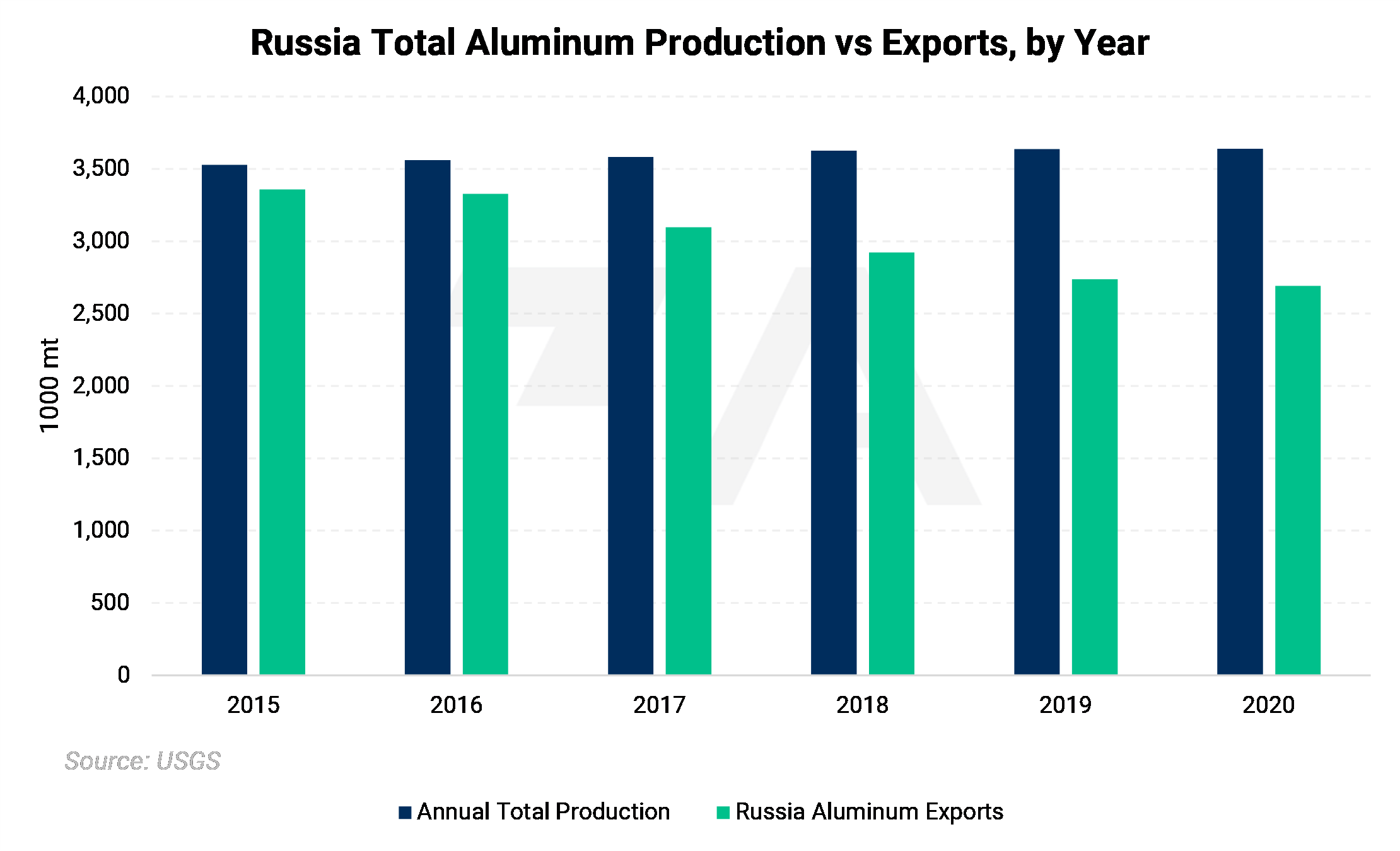
|
To calm domestic metals prices, Russia implemented a 15% export tariff in August 2021 on aluminum and other metals. Monthly aluminum exports spiked considerably before the 15% export tax went into effect. However, exports quickly settled back into its historical range. |
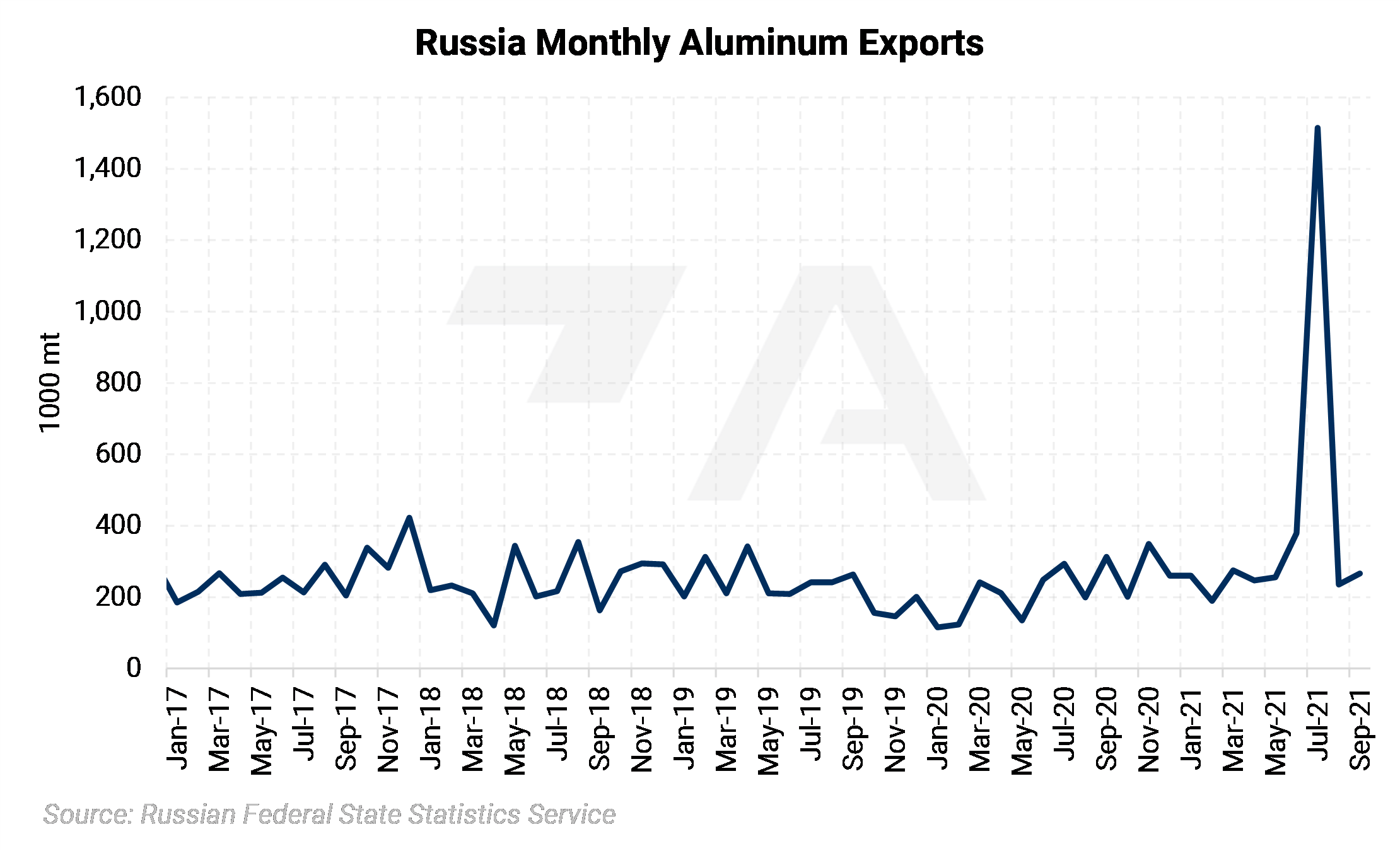 |
|
Russia's nickel presence is important, but not as striking as in aluminum. In the nickel market, Indonesia remains the dominant supplier. Russia produced a third of Indonesia’s output, at an estimated 280 thousand mt of nickel in 2020, on par with the 279 thousand mt produced in 2019. This places Russia as the world’s third-largest nickel producer. |
 |
|
Russia’s nickel exports have been stabile since 2017. Export volumes have hovered between 134 thousand mt to 136 thousand mt in that period. |
 |
|
However, nickel exports were down considerably in 2021, according to the most recent government data. The country exported no nickel in January and September 2021. |
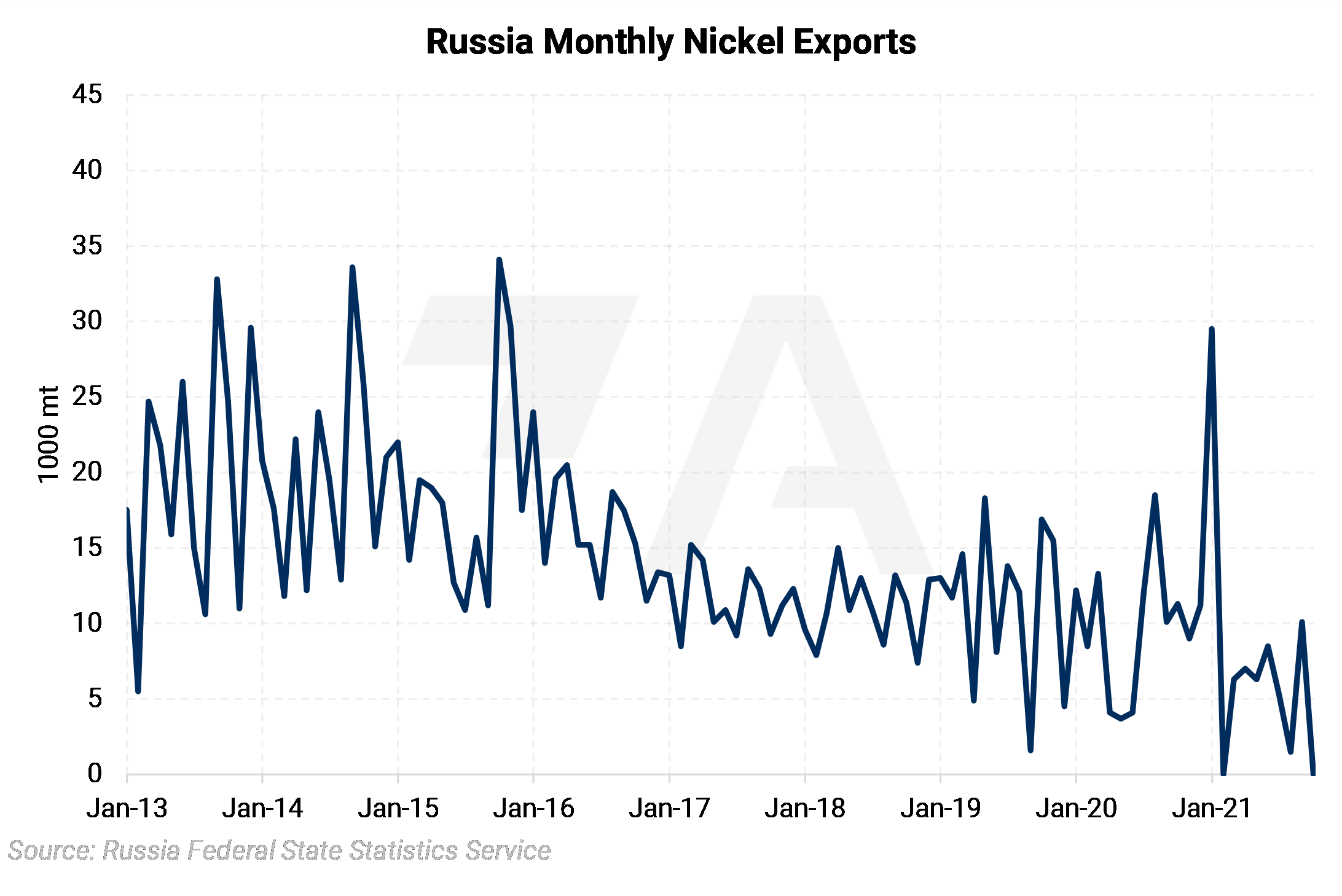 |
|
According to the USGS, Russia produced an estimated 850 thousand mt of copper in 2020, up from the 801 thousand mt produced in 2019. This places Russia as the world’s seventh-largest copper producer. |
 |
|
Russia’s copper export volumes have trended higher since 2016. In 2019, exports were 703 thousand mt, and increased to 776 thousand mt in 2020. |
 |
|
However, copper exports were down considerably in 2021, according to the most recent government data. |
 |
|
According to the USGS, Russia produces around 69 million mt of steel per year, making it the world’s fifth-largest aluminum producer. Russia lags behind China’s 1 billion mt per year but is still an important producer. |
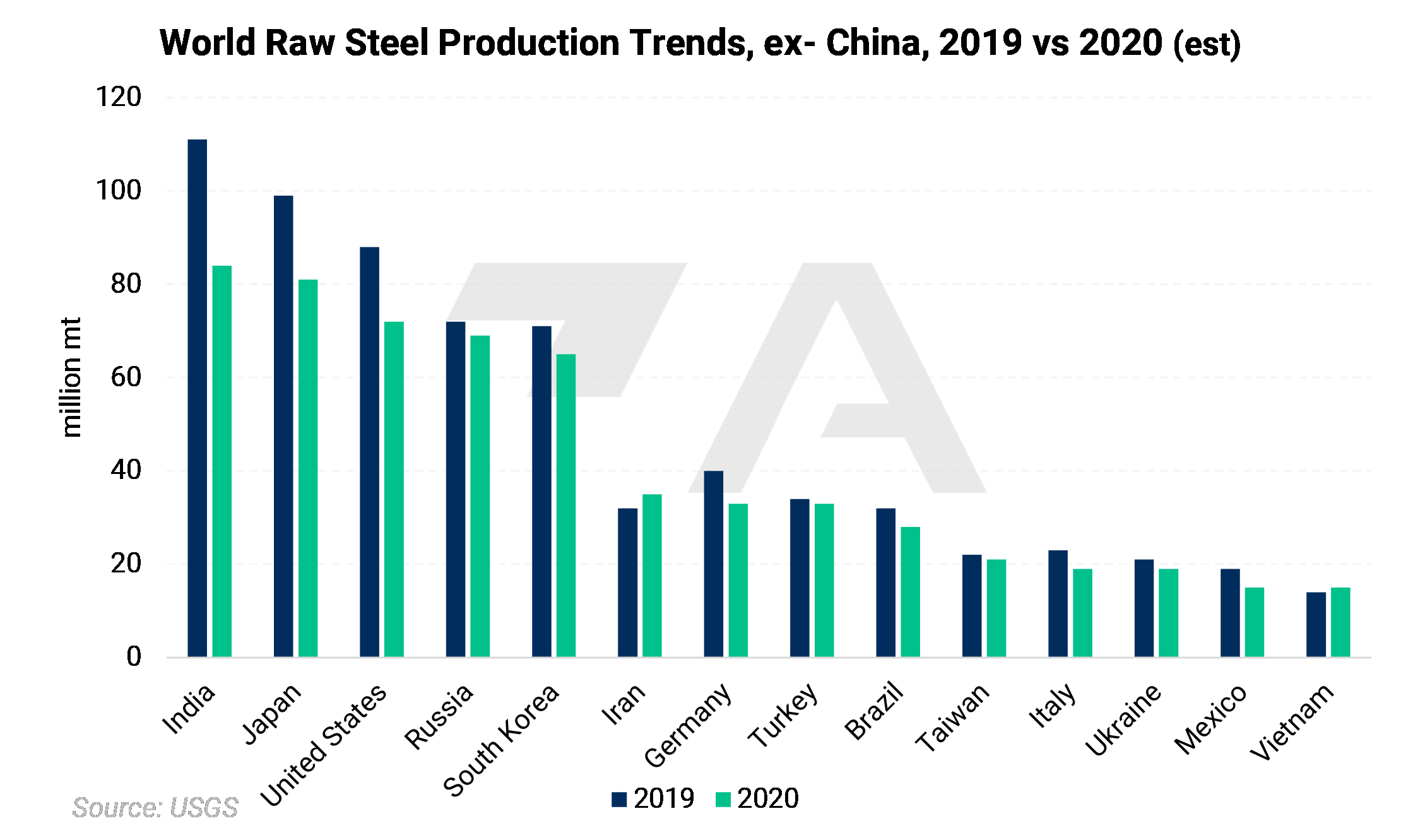 |
|
Carbon steel exports dropped from 2017 through 2019. A small recovery occurred in 2020. |
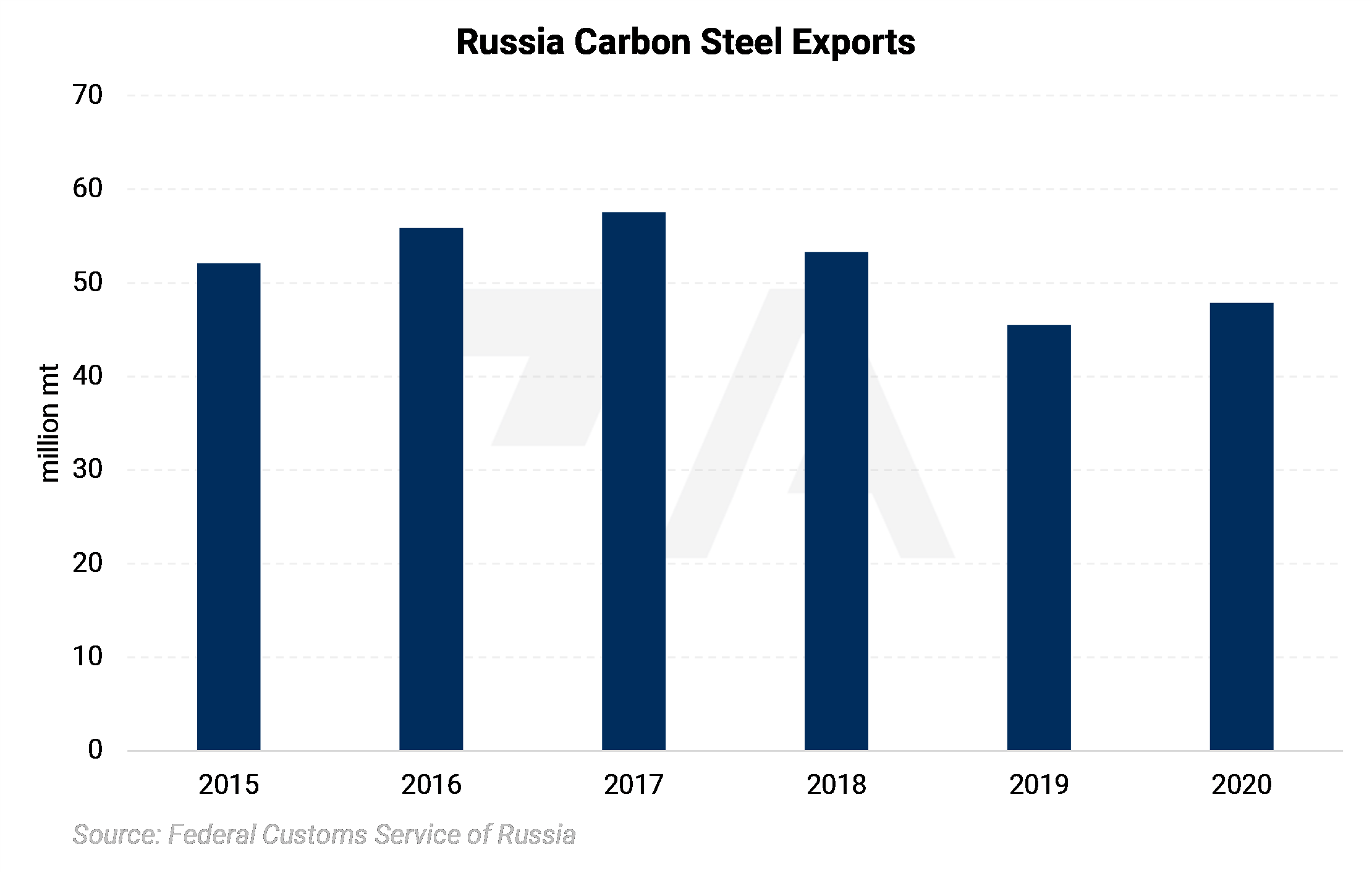 |
|
According to the USGS, Russia produced an estimated 220 thousand mt of lead in 2020, down from the 230 thousand mt produced in 2019. This places Russia as the world’s sixth-largest lead producer. |
 |
|
According to the USGS, Russia produced an estimated 21,000 kg of platinum in 2020, down from the 24,000 kg produced in 2019. This places Russia as the world’s second-largest lead producer. |
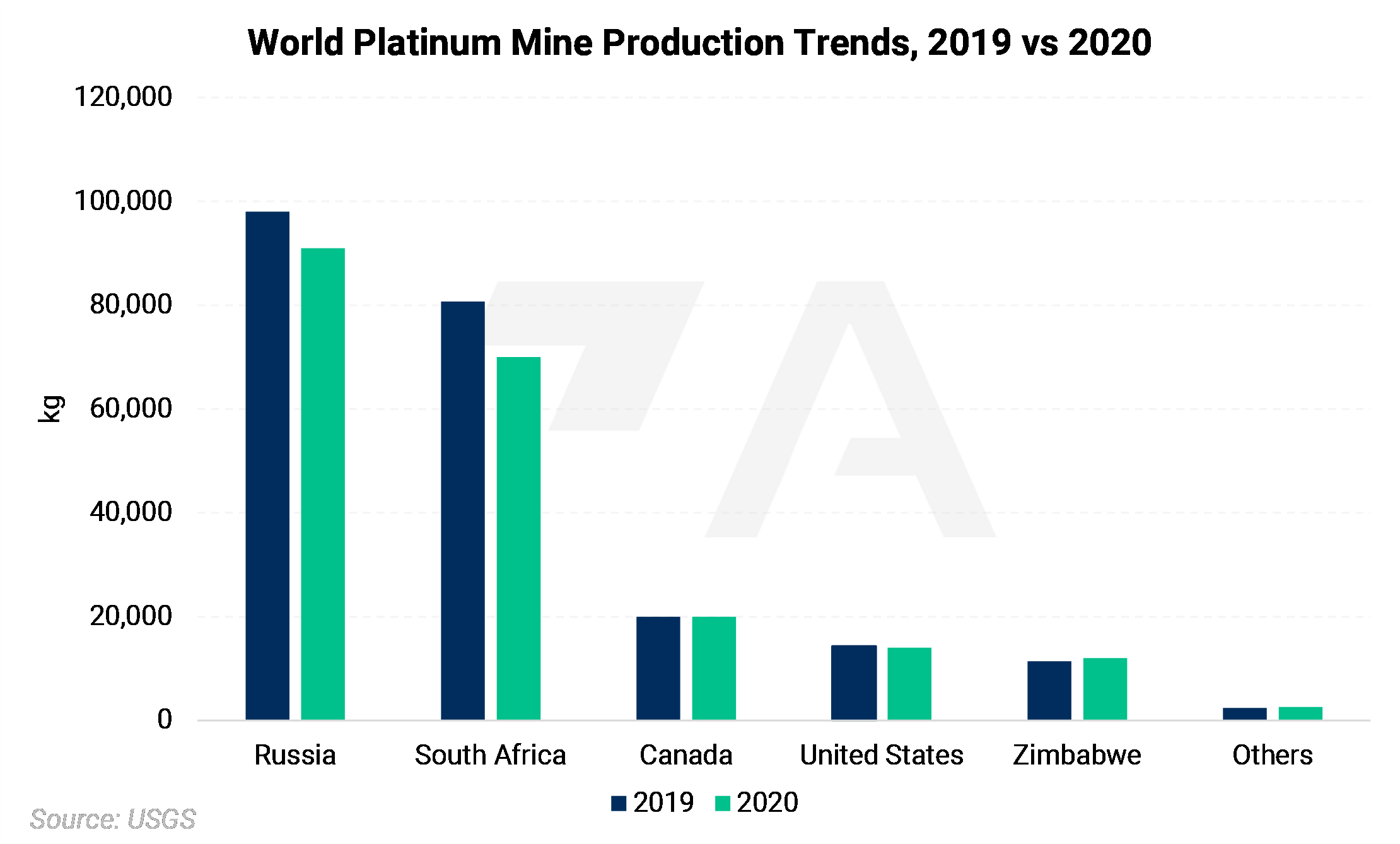 |
|
According to the USGS, Russia produced an estimated 91,000 kg of palladium in 2020, down from the 98,000 kg produced in 2019. This places Russia as the world’s largest palladium producer. |
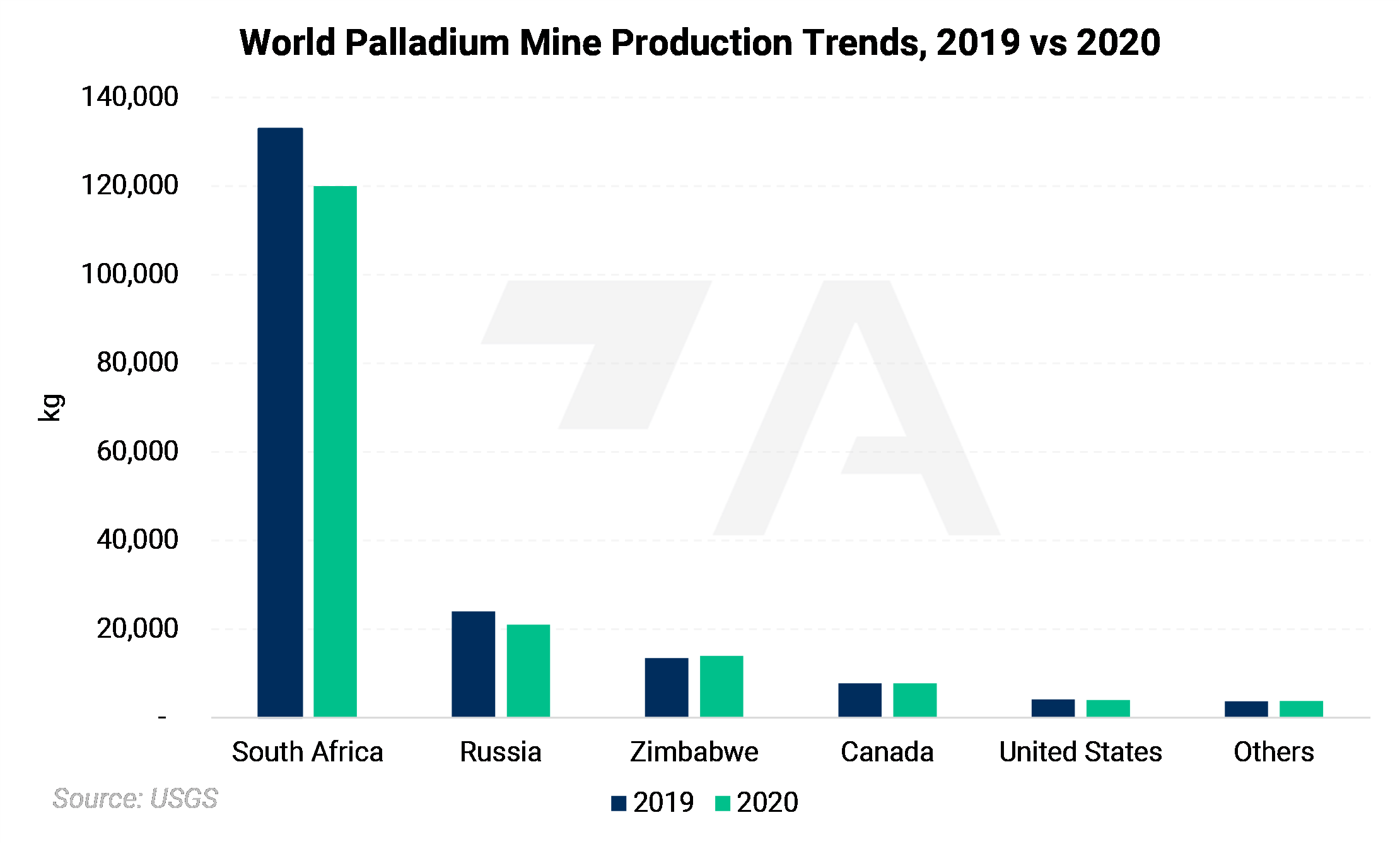 |
|
Russia’s dependence on metals exports has increased over the years. In 2020, metals represented 8.64% of Russia’s exports, according to World Bank estimates. |
 |
AEGIS Thoughts:Russia is clearly a major player when it comes to metals production and exports, specifically that of steel, copper, aluminum, and nickel. Due to export tariffs, total annual export volumes for copper and nickel will likely be down considerably in 2021. Aluminum exports spiked briefly, then settled into the normal historical range. Like 2021, exports in 2022 for certain metals could be lower than historical norms. However, in 2022, sanctions could be the culprit. Any potential sanctions could dramatically change the global supply-demand of many metals, including copper, nickel, steel and aluminum. |